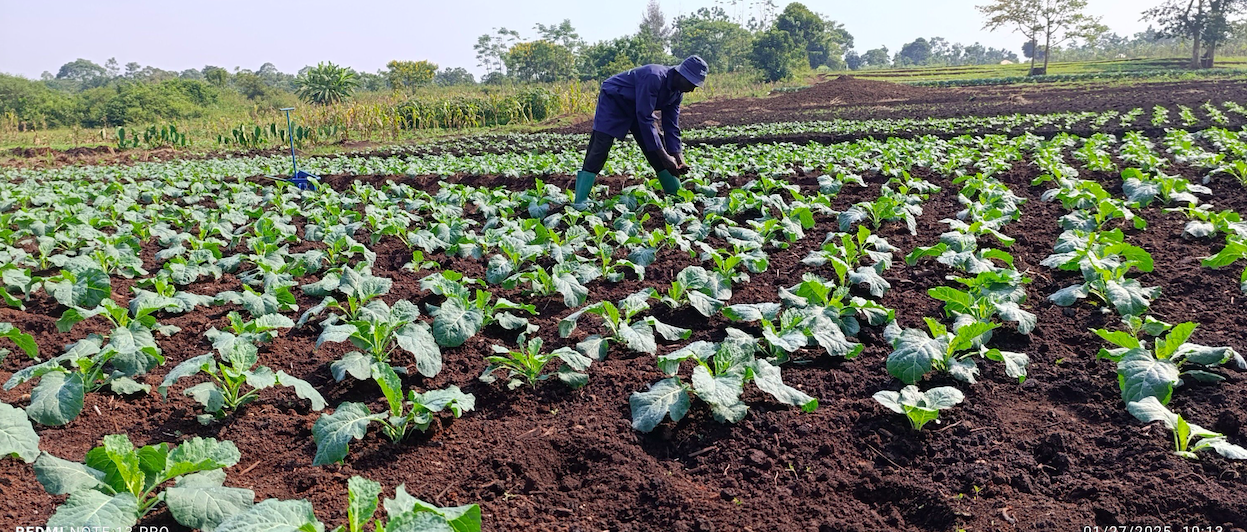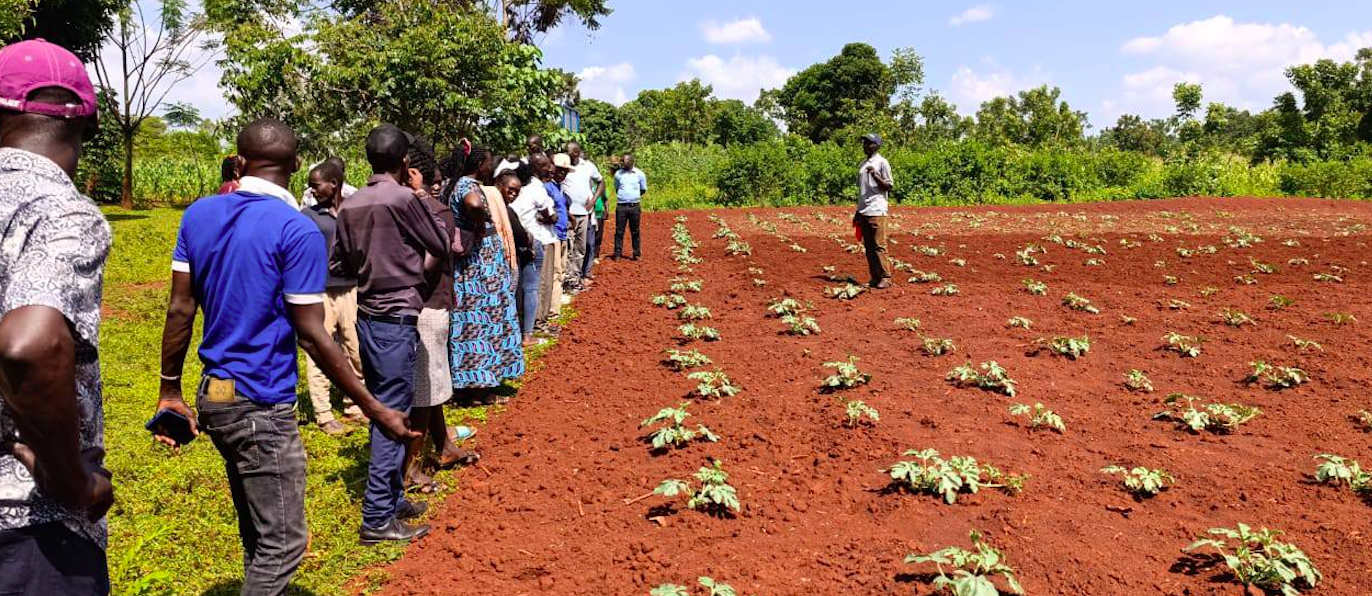
The adoption of best practices, from the application of one to two bags of Yara fertiliser per acre, has accelerated production from a struggling 15 bags per acre to an impressive 25 bags.
Under the scorching Siaya sun, a quiet revolution is making headway—one that is not only transforming barren fields into viable farms but also reshaping the economic fate of a thousand smallholder farmers.
For decades, Siaya County has wallowed in low harvests, erratic rains, and a poor agriculture economy that left many households on the brink of food scarcity. But change is on the horizon. Spurred by innovative farming practices, astute crop choice, and an unbreakable spirit of resolve, farmers are turning adversity into success stories—bounty by bounty.
At the heart of this revolution lies the Aboke Farmer's Service Centre, a revolutionary endeavour that was initiated in 2024 by farmer David Onyunde who did not resign to subsistence farming as his fate. The centre has turned out to be a ray of hope, supporting over 1,200 farmers with education on soil quality, precision farming, and climate-resilient agriculture. Via demonstration farms and tailor-made solutions for farming, what was originally a game of chance against nature has turned out to be a science of yielding the highest possible returns.
For Siaya, maize is not just a staple—it is the lifeline of food security. In the past, by half year, most homes would have exhausted their maize supply, and they would be compelled to buy a 2kg tin at gulping Ksh 180, which pulled already tight family budgets. But all this is changing. With improved crop nutrition initiatives spearheaded by farm players such as Yara, maize yields have picked up, maintaining prices flat at Sh100 for 2kg tin—a massive comfort to families.
The adoption of best practices, from the application of one to two bags of Yara fertilizer per acre, has accelerated production from a struggling 15 bags per acre to an impressive 25 bags. Consistent with the Siaya County Integrated Development Plan (CIDP) 2023-2027, maize production represents over 45 per cent of total household food consumption, and therefore these accomplishments constitute a significant achievement towards food adequacy.
While maize remains the uncontested king of crops, nonetheless, another has become Siaya's new golden child of commercial agriculture: the sunflower. Long neglected, sunflower production is becoming a goldmine, providing farmers with a second source of income with much lower costs of inputs. It tolerates semi-arid conditions, uses little water, and reaches maturity in 90 to 120 days, making it an ideal crop for Siaya's unreliable weather.
Perhaps most importantly, however, it complements Kenya's expanding need for edible oils—a market in which the nation is largely reliant on imports. Kenya imported over 700,000 metric tons of vegetable oils in 2023 alone, and that consumed billions of foreign exchange. Today, farmers in Siaya are cashing in on the demand, selling to factories and commanding organized markets for their produce. According to Onyunde, apart from maize, “farmers are diversifying into crops like soy beans, horticulture and watermelons that enhance good security.”
For
Onyunde's neighbours, the transition to sunflowers has been an eye-opener.
"It's the best decision I ever made," says one of the farmers who
transitioned to growing sunflowers after seeing its potential. "Sunflowers
require less input compared to maize, and the return is predictable. I now have
a guaranteed income stream, and for the first time, I am free from financial
dependency." The Siaya CIDP has oilseed crops as a core pillar in agricultural
diversification, which can increase household incomes by 30% in five years.

Beyond training, the centre plays a crucial role in major field days, where farmers come to see and learn about the latest agricultural advancements.
The Aboke Farmer's Service Centre continues to be a hub of agricultural innovation, offering quality inputs, technical services, and demonstrations of climate-resilient agricultural models. Producing an astonishing 600 kilograms of collard greens per week from just 0.5 acres of land, the centre is a demonstration of precision farming techniques and maximum nutrient optimization.
This approach is revolutionizing what is possible for smallholder
farmers, who are many of them now diversifying into horticulture, watermelons,
and soybeans—giving them a year-round income instead of relying on seasonal
maize harvests.
"For the first time in years, I don't stress about whether my household will have enough maize to sustain us for the entire year. Now, I sell my excess and still have enough for household consumption. Farming is now a business, not survival," Oyunde says. His is the experience of many others in the county, where more maize production is not only guaranteeing food security but stabilizing local markets. The CIDP places it that if current trends continue, Siaya will manage to cut down its reliance on relief food by at least 30% within the next half decade—a level of achievement no one ever even dreamed of achieving ten years ago.
Onyunde's influence extends far beyond his own farm. He coordinates six demonstration farms where farmers receive manual training, coordinates over 10 widow-managed farms in order to empower them economically, and runs over 15 online and mobile farms where he provides virtual advisory agricultural services. His method is showing that with correct information and the availability of inputs, agriculture does not have to be subsistence farming—it is a means of wealth creation. "It's not about my success," claims Onyunde. "We exchange information, seeds, and methods. Farming is no longer a solitary struggle; it's a path to success in common."
Beyond training, the centre plays a crucial role in major field days, where farmers come to see and learn about the latest agricultural advancements, including Yara’s products like YaraSuna, which improves soil water retention. These field days provide hands-on experience, ensuring farmers adopt best practices for maximum productivity.
Technology is also assisting Siaya's agricultural revolution. While maize and sunflower farms swing to and fro under the heat of the Siaya sun, there is a story greater than that of agriculture. These are symbols of resilience, dynamism, and a county in control of its economic destiny. While once a food-deficit-generating area was one that produced sub-par harvests and hunger, these are now embracing commercial agriculture, value-chain organized agriculture, and farmer-led change. With continued support from key agriculture players and greater commitment to intelligent farming, Siaya is not waiting for change—it is driving it.
In a region
where agriculture once presented an uphill battle, a brighter dawn has
broken—one where intellect, innovation, and determination are turning struggles
into surplus, and doubt into a future promised by the planet.











